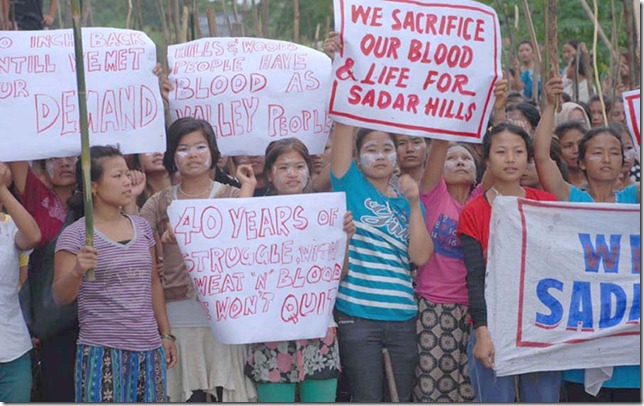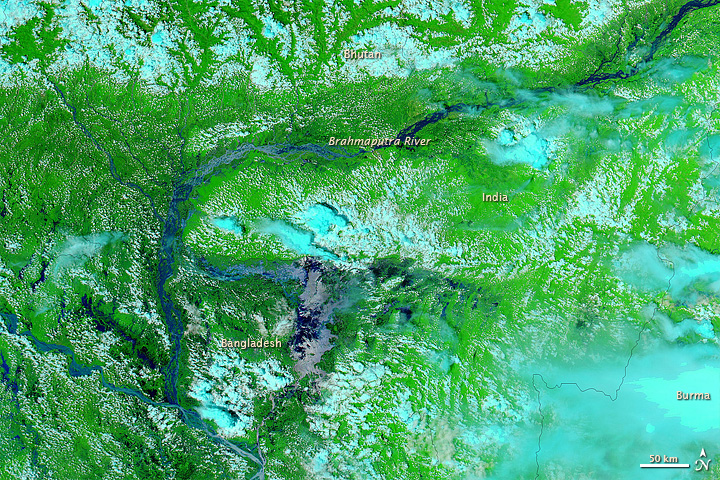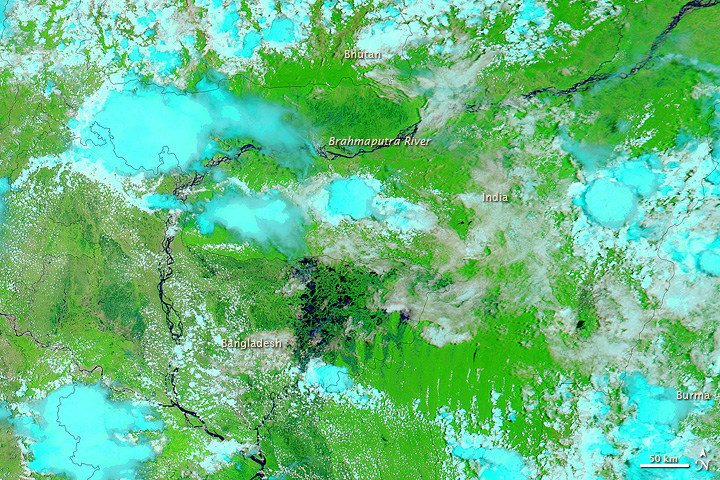 REBEL OUTFITS in the Northeast are falling apart, a phenomenon hitherto unseen in the region. And perhaps for the first time in the history of insurgency in the region, one rebel outfit has openly criticised others. The Achik National Volunteer Council (ANVC) of Meghalaya, that agreed to a ceasefire in 2004, has given a 20-day ultimatum to the Paresh Barua-led anti-talk faction of the United Liberation Front of Asom (ULFA) to quit its bases in the Garo Hills and stop helping the Garo National Liberation Army (GNLA). A similar ultimatum has been issued to the Ranjan Daimary-led National Democratic Front of Bodoland (NDFB). A day after ANVC issued this ultimatum, Ratnadip Choudhury caught up with the group’s spokesperson Torik Jangning Marak to know why the ANVC has dared to dare ULFA and NDFB. Excerpts from an interview.
REBEL OUTFITS in the Northeast are falling apart, a phenomenon hitherto unseen in the region. And perhaps for the first time in the history of insurgency in the region, one rebel outfit has openly criticised others. The Achik National Volunteer Council (ANVC) of Meghalaya, that agreed to a ceasefire in 2004, has given a 20-day ultimatum to the Paresh Barua-led anti-talk faction of the United Liberation Front of Asom (ULFA) to quit its bases in the Garo Hills and stop helping the Garo National Liberation Army (GNLA). A similar ultimatum has been issued to the Ranjan Daimary-led National Democratic Front of Bodoland (NDFB). A day after ANVC issued this ultimatum, Ratnadip Choudhury caught up with the group’s spokesperson Torik Jangning Marak to know why the ANVC has dared to dare ULFA and NDFB. Excerpts from an interview.
Torik Jangning Marak, Spokesperson, ANVC
Photo: Avalok Langer
What made you issue an ultimatum to ULFA and the NDFB to leave Garo Hills?
First, these groups are creating chaos in the Garo Hills. Second, they are helping the GNLA terrorise Garo-populated areas by assisting in kidnappings, killings, extortions, etc. Third, they have foreign connections — they are hand-in-glove with Pakistan’s ISI. Fourth, they want to derail the ongoing peace process with the Indian government. Fifth, if they remain in the hills, they will disturb the peace initiative in Assam. Plus, they don’t belong in Garo Hills.
For seven years now, ANVC has been talking peace with the Centre to work out a solution to long-pending Garo issues. GNLA came up as an outfit with the help of NDFB and ULFA and made a similar demand with the support of both anti-talk groups. They want to derail us to prove their power. They have tried to confuse the government by adopting similar names as that of ANVC leaders. Demands, killings and kidnappings took place for which they kept blaming ANVC. We are serious about the commitments we make to the Centre on the table. We have endured for years in the jungle but all our endeavours to come to a peaceful solution seemed to have provided a way for the GNLA to rise. The only way out for restoring peace is to drive away all who are against this initiative. If it was not for the NDFB and ULFA (anti-talk factions), it would not have been as crucial as we see it today, and I assure you, if we do not take this step they will surely disrupt the ongoing peace process with the pro-talk groups in Assam.
When ANVC was active, it had links with both ULFA and NDFB, particularly after Operation All Clear in Bhutan. Why has the relationship petered out?
They did try to strike an understanding with us in the past. The scaling down is simply because we do not want our land and people to be exploited.
Reports say that it was the ANVC that helped Assam rebel groups build up bases in Garo Hills for easy transit to Bangladesh. After the ceasefire, does the ANVC own up to these actions?
This is not true, but we do not rule out other smaller elements that tried to crop up during the time with their help and taking our name to help them. People, especially on the border, are in a very pathetic state — they may do anything for a little sum of money, but ANVC has always been firm in not allowing any other organisation to set its base in Garo Hills.
There are reports that the ANVC had taken ULFA’s help to set up base in Bangladesh. ULFA was linked to the ISI and the Directorate General of Forces Intelligence even then. Why did you not object then?
See, ANVC did not need ULFA, but ULFA needed ANVC to use Garo Hills as a corridor and to use it as their hideout for creating terror in Assam. ANVC did not endorse that idea.
How does ANVC see the GNLA?
Our mindset is different and training is focussed in such a way that we create leaders. GNLA is not our off-shoot, although some leaders like Soham were earlier a part of ANVC. We never treated him as an enemy. But they kept poking and attempting to disturb our cadres and the peace process. Now, they are threatening our own people with dire consequences and we have to take a stand. We have not come this far to see another form of exploitation.
The ANVC is in ceasefire from 2004. Do you feel that the GNLA’s overtones will disrupt the peace process in any way?
Yes, because ANVC wants peace and GNLA wants to disturb the peace. Where does this leave us? After seven years of ceasefire and putting up with all kinds of things we want something for our people.
The GNLA and ANVC locked horns over the 16 August bandh call. Now we are told that locals are feeling threatened. What’s your reaction?
People should not fear ANVC because we want to protect them; rather, they should fear GNLA, which is under foreign influence. They are becoming desperate and may do something silly to prove their ability. They started the fire, and we drew the line.
The peace negotiations between the Centre and the ANVC is going at a very slow pace.
We know what is going on and where the holes are, but do not want to comment on that. We will get there once Garo Hills is peaceful.
Will the ANVC step in if the Meghalaya government asks it to solve the GNLA problem? What would your stand be if Champion R Sangma (self-styled chairman of GNLA) also declares that his outfit wants to join the ongoing negotiation?
Nobody has authority over us, no one can tell us what to do. We are in a peace process and do not appreciate someone dictating terms. We make our decisions depending on the situation. For GNLA and even for Sangma, their only way out is to surrender.
When ANVC took up arms, the call was for a separate Achikland. Now you have scaled down the demand to an autonomous district council. Why? If negotiations fail, will the ANVC again resort to military action?
Scaling down the demand was not our idea but of society elders, and they had a point, they had a vision. They did not want Meghalaya to be divided further. Things cannot be expected to get better unless politicians change their attitude and take initiatives for the sake of the people. Armed struggle without political initiative is meaningless. We were made to look like clowns sometimes. But we can assure you this, seven years have taught us a lot and we are wise enough to make our own decisions now.
With inputs from Purbasha Bhattacharjee in Shillong
Ratnadip Choudhury is a Principal Correspondent with Tehelka. ratnadip@tehelka.com







 New Delhi, Aug 22 : Booker prize-winning author Arundhati Roy launched a scathing attack Monday on the "aggressive nationalism" behind the anti-corruption drive led by hunger-striking campaigner Anna Hazare.
New Delhi, Aug 22 : Booker prize-winning author Arundhati Roy launched a scathing attack Monday on the "aggressive nationalism" behind the anti-corruption drive led by hunger-striking campaigner Anna Hazare. 



 REBEL OUTFITS in the Northeast are falling apart, a phenomenon hitherto unseen in the region. And perhaps for the first time in the history of insurgency in the region, one rebel outfit has openly criticised others. The Achik National Volunteer Council (ANVC) of Meghalaya, that agreed to a ceasefire in 2004, has given a 20-day ultimatum to the Paresh Barua-led anti-talk faction of the United Liberation Front of Asom (ULFA) to quit its bases in the Garo Hills and stop helping the Garo National Liberation Army (GNLA). A similar ultimatum has been issued to the Ranjan Daimary-led National Democratic Front of Bodoland (NDFB). A day after ANVC issued this ultimatum, Ratnadip Choudhury caught up with the group’s spokesperson Torik Jangning Marak to know why the ANVC has dared to dare ULFA and NDFB. Excerpts from an interview.
REBEL OUTFITS in the Northeast are falling apart, a phenomenon hitherto unseen in the region. And perhaps for the first time in the history of insurgency in the region, one rebel outfit has openly criticised others. The Achik National Volunteer Council (ANVC) of Meghalaya, that agreed to a ceasefire in 2004, has given a 20-day ultimatum to the Paresh Barua-led anti-talk faction of the United Liberation Front of Asom (ULFA) to quit its bases in the Garo Hills and stop helping the Garo National Liberation Army (GNLA). A similar ultimatum has been issued to the Ranjan Daimary-led National Democratic Front of Bodoland (NDFB). A day after ANVC issued this ultimatum, Ratnadip Choudhury caught up with the group’s spokesperson Torik Jangning Marak to know why the ANVC has dared to dare ULFA and NDFB. Excerpts from an interview. 




